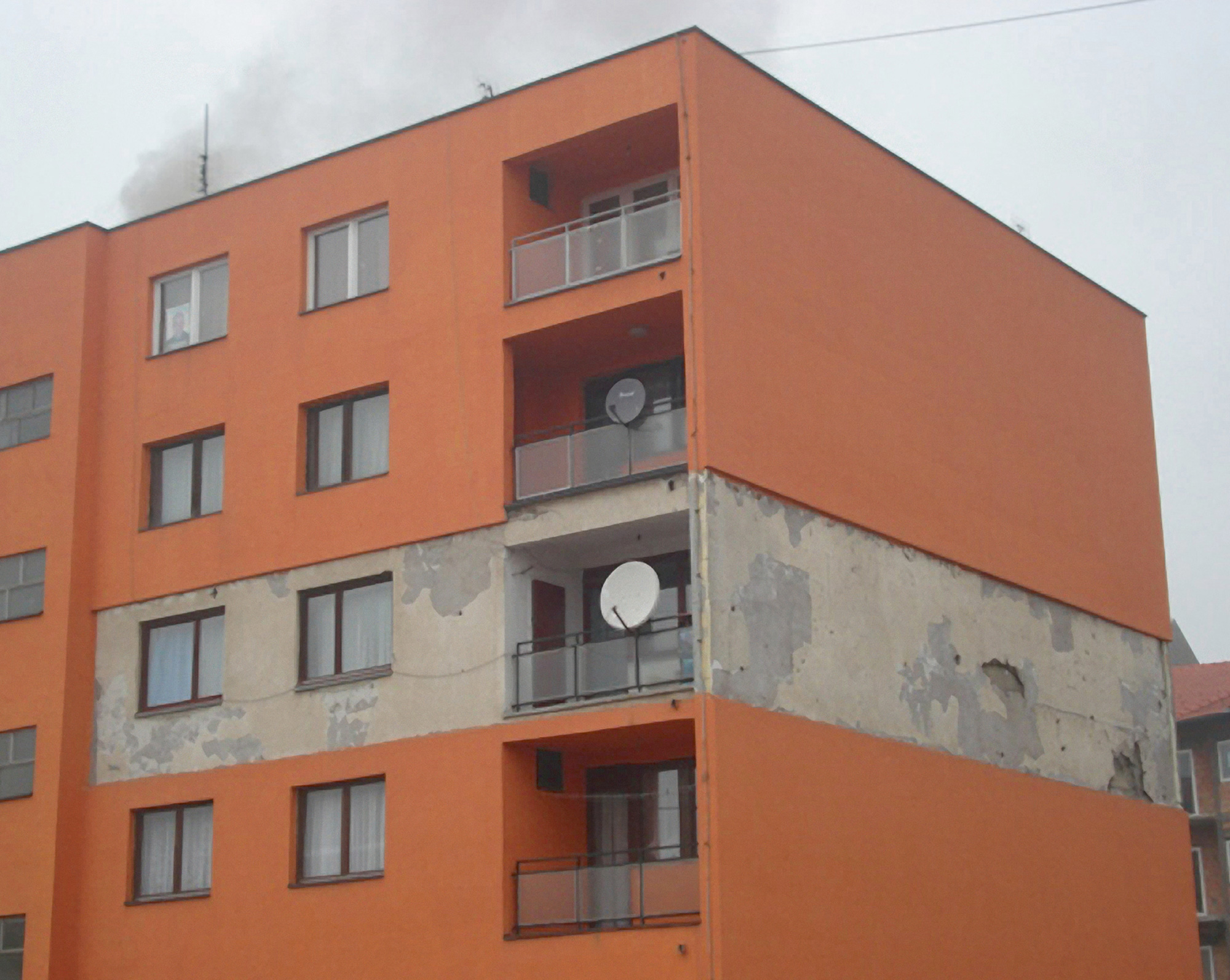Leftovers / The Future of Neglect
Urban renewal and the politics of refusal
Srdjan Jovanovic Weiss
“Leftovers” is a column that investigates the cultural significance of detritus.
A friend sent me this photograph, which was taken by someone in Kalesija, a town in the Tuzla canton within the Federation of Bosnia and Herzegovina. It depicts the corner of a building whose exterior has been renovated and painted in a vivid, optimistic color—somewhere between peach and orange. A sharply defined area has been omitted from the renovation; it appears to be the facade of a single apartment. On the old concrete walls that are not covered with the new paint, one can still spot traces of decay. On closer inspection, one can also see what appear to be bullet marks dispersed across the raw surface, as if the building had been randomly fired upon. A large satellite dish—the largest of the many in the image—sits on the balcony of the apartment. The perfect outline of the unrenovated area suggests that it is the result of purposeful neglect.

I shared this image with friends and colleagues—by email and on blogs and social networking sites—without much description other than a caption reading “wonderful neglect” and a note stating where it was taken. The responses were surprisingly diverse. On one end of the spectrum, the image was read as a symbol of civil disobedience—resistance to a renovation that in its collective character too strongly echoed an older ethos of socialist solidarity. At the other extreme were pragmatic interpretations that understood the gesture as a strictly financial one. This was best summarized in the wry note from a colleague who wondered if the owner had spent all his money on the satellite dish on his terrace instead.
Since I first circulated the image, I have learned more about the circumstances surrounding the renovation. As it turns out, the unrenovated section visible in the photo is only one of two areas left out. Together, they mark the facades of two distinct apartments whose owners reportedly did not contribute money when the municipality of Kalesija decided in the summer of 2007 to paint the building, together with a few others, in order to make the town “better and more beautiful.” Despite its good intentions, the city did not have sufficient funds to pay for the entire project and the owners of the individual apartments were therefore asked to help pay for the restoration, in the way a coop or condominium fee increase would be used in a US context to fund general work on a building.
It is not possible to know with certainty the motivations of the owners who rebuffed the city’s request, but their refusal does open a space for speculation, particularly given the complex social dynamics of the area. Before the war, Kalesija was predominantly Bosnian muslim (today known as Bosniak), with a small Serbian minority. On 2 May 1992, during the early stages of the Bosnian war, the Bosnian Serbian army overran the town and started to displace the muslims. Only twenty days later, the Bosniak forces reclaimed the city. Many of the Serbs who originally lived in Kalesija fled. Today, the town is ninety-nine percent Bosniak. The years following the 1995 Dayton Accords, which ended the war in Bosnia, saw concerted efforts toward urban renewal across the country. In Tuzla, the government plan of 2000 for the return of displaced populations noted that residents who had fled had started to return in significant numbers by 1998, though they largely consisted of Bosniaks from other parts of Bosnia and from abroad. The return of Serbs to towns like Kalesija was reported as minimal, but it was significant enough to inspire the government to further encourage Serbs to return with a scheme for better financial aid.